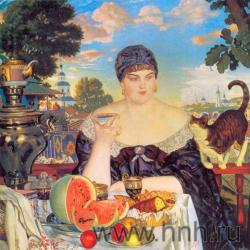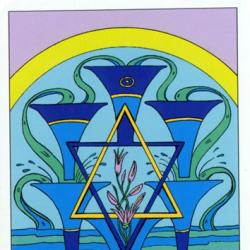The main occupations of the Khakass in Siberia. Khakass or Kyrgyz? Instilling hard work and morality in a child
Khakass(self-name tadar, plural h. tadarlar; obsolete - Minusinsk Tatars, Abakan (Yenisei) Tatars, Achinsk Tatars listen)) are a Turkic people of Russia living in Southern Siberia on the left bank of the Khakass-Minusinsk Basin. The traditional religion is shamanism, many were baptized into Orthodoxy (often by force) in the 19th century.
Subethnic groups
The Telengits, Teleuts, Chulyms, and Shors are close to the Khakass in culture and language.

Tribal division
The number of Khakass in Khakassia in 1926-2010
The total number of Khakass in the Russian Federation, compared with the census data of the year (75.6 thousand people), decreased and amounted to 72,959 people according to the results of the year’s census.

Language
According to another classification, it belongs to the independent Khakass (Kyrgyz-Yenisei) group of Eastern Turkic languages, to which, in addition to Khakassians also include Shors (Mras Shor dialect), Chulyms (Middle Chulym dialect), Yugu (yellow Uighurs) (Saryg-Yugur language). They go back to the ancient Kyrgyz or Yenisei-Kyrgyz language. In addition to this, to Khakassian similar in language (although they belong to the Western Turkic North-Altai group) are the Kumandins, Chelkans, Tubalars (and the Kondom Shor dialect, and the Lower Chulym dialect), as well as (although they belong to the Western Turkic Kyrgyz-Kypchak group) - the Kyrgyz, Altaians, Teleuts, Telengits.
Anthroponymy of the Khakass
Material culture
Spiritual culture
Folk games and competitions
Some Khakass folk games and competitions:
Physical anthropology
The Khakass are divided into two anthropological types of mixed origin, but generally belonging to the large Mongoloid race:
- Ural (Biryusa, Kyzyls, Beltyrs, part of the Sagais)
- South Siberian (Kachins, steppe part of the Sagais, Koibals).
Write a review about the article "Khakass"
Notes
Literature
- Bakhrushin S.V. Yenisei Kirghiz in the 17th century. // Scientific works III. Selected works on the history of Siberia in the 16th-17th centuries. Part 2. History of the peoples of Siberia in the XVI-XVII centuries. M.: Publishing House of the USSR Academy of Sciences, 1955.
- Kozmin N. N. Khakassy: historical, ethnographic and economic essay of the Minusinsk region. - Irkutsk: Publishing house. Irkutsk scientific section workers of Rabpros, 1925. - X, 185 p. - (Local history series No. 4 / edited by M. A. Azadovsky; issue V). - Bibliography in note at the end of each chapter.
- Baskakov N. A. Turkic languages, M., 1960, 2006
- Tekin T. The problem of classification of Turkic languages // Problems of modern Turkology: materials of the II All-Union Turkological Conference. - Alma-Ata: Science, 1980 - P. 387-390
- Languages of the world. Turkic languages, Bishkek, 1997
Links
|
||||||||||||||||||||||||||||||
An excerpt characterizing the Khakass
From eight o'clock the rifle shots were joined by cannon fire. There were a lot of people on the streets, hurrying somewhere, a lot of soldiers, but just as always, cab drivers were driving, merchants were standing at the shops and services were going on in the churches. Alpatych went to the shops, to public places, to the post office and to the governor. In public places, in shops, at the post office, everyone was talking about the army, about the enemy who had already attacked the city; everyone asked each other what to do, and everyone tried to calm each other down.At the governor's house, Alpatych found a large number of people, Cossacks and a road carriage that belonged to the governor. On the porch, Yakov Alpatych met two noblemen, one of whom he knew. A nobleman he knew, a former police officer, spoke heatedly.
“It’s not a joke,” he said. - Okay, who is alone? One head and poor - so alone, otherwise there are thirteen people in the family, and all the property... They brought everyone to disappear, what kind of authorities are they after that?.. Eh, I would have outweighed the robbers...
“Yes, well, it will be,” said another.
- What do I care, let him hear! Well, we are not dogs,” said the former police officer and, looking back, he saw Alpatych.
- And, Yakov Alpatych, why are you there?
“By order of his Excellency, to Mr. Governor,” answered Alpatych, proudly raising his head and putting his hand in his bosom, which he always did when he mentioned the prince... “They deigned to order to inquire about the state of affairs,” he said.
“Well, just find out,” shouted the landowner, “they brought it to me, no cart, no nothing!.. Here she is, do you hear? - he said, pointing to the side where the shots were heard.
- They brought everyone to perish... robbers! - he said again and walked off the porch.
Alpatych shook his head and went up the stairs. In the reception room there were merchants, women, and officials, silently exchanging glances among themselves. The office door opened, everyone stood up and moved forward. An official ran out of the door, talked something with the merchant, called behind him a fat official with a cross on his neck and disappeared again through the door, apparently avoiding all the looks and questions addressed to him. Alpatych moved forward and the next time the official exited, putting his hand in his buttoned coat, he turned to the official, handing him two letters.
“To Mr. Baron Asch from General Chief Prince Bolkonsky,” he proclaimed so solemnly and significantly that the official turned to him and took his letter. A few minutes later the governor received Alpatych and hastily told him:
- Report to the prince and princess that I didn’t know anything: I acted according to the highest orders - so...
He gave the paper to Alpatych.
- However, since the prince is unwell, my advice to them is to go to Moscow. I'm on my way now. Report... - But the governor didn’t finish: a dusty and sweaty officer ran through the door and began to say something in French. The governor's face showed horror.
“Go,” he said, nodding his head to Alpatych, and began asking the officer something. Greedy, frightened, helpless glances turned to Alpatych as he left the governor’s office. Unwittingly now listening to the nearby and increasingly intensifying shots, Alpatych hurried to the inn. The paper that the governor gave to Alpatych was as follows:
“I assure you that the city of Smolensk does not yet face the slightest danger, and it is incredible that it will be threatened by it. I am on one side, and Prince Bagration on the other side, we are going to unite in front of Smolensk, which will take place on the 22nd, and both armies with their combined forces will defend their compatriots in the province entrusted to you, until their efforts remove the enemies of the fatherland from them or until they are exterminated in their brave ranks to the last warrior. You see from this that you have every right to reassure the inhabitants of Smolensk, for whoever is protected by two such brave troops can be confident of their victory.” (Instruction from Barclay de Tolly to the Smolensk civil governor, Baron Asch, 1812.)
People were moving restlessly through the streets.
Carts loaded with household utensils, chairs, and cabinets kept leaving the gates of houses and driving along the streets. In the neighboring house of Ferapontov there were carts and, saying goodbye, the women howled and said sentences. The mongrel dog was barking and spinning around in front of the stalled horses.
Alpatych, with a more hasty step than he usually walked, entered the yard and went straight under the barn to his horses and cart. The coachman was sleeping; he woke him up, ordered him to lay him down and entered the hallway. In the master's room one could hear the crying of a child, the wracking sobs of a woman, and the angry, hoarse cry of Ferapontov. The cook, like a frightened chicken, fluttered in the hallway as soon as Alpatych entered.
- He killed her to death - he beat the owner!.. He beat her like that, she dragged her like that!..
- For what? – asked Alpatych.
- I asked to go. It's a woman's business! Take me away, he says, don’t destroy me and my little children; the people, he says, have all left, what, he says, are we? How he started beating. He hit me like that, he dragged me like that!
Alpatych seemed to nod his head approvingly at these words and, not wanting to know anything more, went to the opposite - the master's door of the room in which his purchases remained.
“You are a villain, a destroyer,” shouted at that time a thin, pale woman with a child in her arms and a scarf torn from her head, bursting out of the door and running down the stairs to the courtyard. Ferapontov followed her and, seeing Alpatych, straightened his vest and hair, yawned and entered the room behind Alpatych.
- Do you really want to go? - he asked.
Without answering the question and without looking back at the owner, looking through his purchases, Alpatych asked how long the owner was supposed to stay.
- We'll count! Well, did the governor have one? – Ferapontov asked. – What was the solution?
Alpatych replied that the governor did not tell him anything decisive.
- Are we going to leave on our business? - said Ferapontov. - Give me seven rubles per cart to Dorogobuzh. And I say: there is no cross on them! - he said.
“Selivanov, he got in on Thursday and sold flour to the army for nine rubles a sack.” Well, will you drink tea? - he added. While the horses were being pawned, Alpatych and Ferapontov drank tea and talked about the price of grain, the harvest and favorable weather for harvesting.
“However, it began to calm down,” said Ferapontov, drinking three cups of tea and getting up, “ours must have taken over.” They said they won't let me in. This means strength... And after all, they said, Matvey Ivanovich Platov drove them into the Marina River, drowned eighteen thousand, or something, in one day.
Alpatych collected his purchases, handed them over to the coachman who came in, and settled accounts with the owner. At the gate there was the sound of wheels, hooves and bells of a car leaving.
It was already well after noon; half the street was in the shade, the other was brightly lit by the sun. Alpatych looked out the window and went to the door. Suddenly a strange sound of a distant whistle and blow was heard, and after that there was a merging roar of cannon fire, which made the windows tremble.
Alpatych went out into the street; two people ran down the street towards the bridge. From different sides we heard whistles, impacts of cannonballs and the bursting of grenades falling in the city. But these sounds were almost inaudible and did not attract the attention of residents in comparison with the sounds of gunfire heard outside the city. It was a bombardment, which at five o'clock Napoleon ordered to open on the city, from one hundred and thirty guns. At first the people did not understand the significance of this bombing.
The sounds of falling grenades and cannonballs aroused at first only curiosity. Ferapontov’s wife, who had never stopped howling under the barn, fell silent and, with the child in her arms, went out to the gate, silently looking at the people and listening to the sounds.
In the first millennium AD. The Kyrgyz dominated in Southern Siberia. In the 9th century they created their own state on the middle Yenisei - the Kyrgyz Kaganate. The Chinese called them “Khyagasy” - a term that later, in the Russian version, took the form “Khakasy”.
At the beginning of the 13th century, the Kirghiz Kaganate fell under the blows of the Tatar-Mongols. But a century and a half later, when the Mongol Empire, in turn, collapsed, the tribes of the Minusinsk Basin created a new political entity - Khongorai, led by the Kyrgyz nobility. The Khongorai tribal community served as the cradle of the Khakass people.
The Kirghiz stood out for their belligerence and fierce temperament. Among many peoples of Southern Siberia, mothers frightened their children: “The Kirghiz will come, catch you and eat you.”
Therefore, the Russians, who appeared here in the 17th century, met fierce resistance. As a result of bloody wars, the territory of Khongorai was practically depopulated and in 1727, according to the Treaty of Burin with China, it was transferred to Russia. In pre-revolutionary Russian documents it is known as “Kyrgyz land” as part of the Yenisei province.
The revolution of 1917 became the cause of a new act of tragedy for the Khakass. The rules imposed by the Soviet government aroused sharp rejection by the people, who considered a person with 20 horses to be poor. Khakass partisan detachments continued to fight in the mountainous regions, according to official data, until 1923. By the way, it was in the struggle against them that the famous Soviet writer Arkady Gaidar spent his youth. And collectivization caused a new outbreak of armed resistance, which was brutally suppressed.
And yet, from the point of view of ethno-political history, being part of Russia as a whole played a positive role for the Khakassians. In the 19th-20th centuries, the process of formation of the Khakass people was completed. Since the 1920s, the ethnonym “Khakass” has been approved in official documents.
Before the revolution, foreign departments and councils existed on the territory of the Minusinsk district. In 1923, the Khakass national district was formed, which was subsequently transformed into an autonomous region of the Krasnoyarsk Territory, and since 1991 - into a republic, an independent subject of the Russian Federation.
The number of the Khakass people also grew steadily. Today Russia is inhabited by about 80 thousand Khakass (an increase in number of more than 1.5 times over the twentieth century).
For centuries, Christianity and Islam waged an attack on the traditional religion of the Khakass - shamanism. Officially, on paper, they have achieved great success, but in real life, shamans still enjoy much more respect among the Khakass than priests and mullahs.
White Wolf - Chief shaman
Khakassians.
Khakass shaman Egor Kyzlasov in full robes (1930)).
Until the beginning of the 20th century, the Khakass made collective prayers to heaven, from whom they usually asked for a good harvest and lush grass for livestock. The ceremony took place on a mountain peak. Up to 15 lambs were sacrificed to heaven. They were all white, but always with a black head.
When someone in the family was sick for a long time, one should turn to the birch tree for help. Praying to the birch tree was an echo of that distant time when people considered trees to be their ancestors. The patient’s relatives chose a young birch tree in the taiga, tied colored ribbons to its branches, and from that moment on it was considered a shrine, the guardian spirit of this family.
For many centuries, the main occupation of the Khakass was cattle breeding. According to ancient legends, the “master of the cattle” was a powerful spirit - Izykh Khan. In order to appease him, Izykh Khan was given a horse as a gift. After a special prayer with the participation of a shaman, the chosen horse was woven into its mane with a colored ribbon and released into the wild. Now they called her exclusively “izyh”. Only the head of the family had the right to ride it. Every year in spring and autumn he washed his mane and tail with milk and changed his ribbons. Each Khakass clan chose horses of a certain color as their horses.
In spring and autumn, flamingos sometimes fly over Khakassia, and the man who caught this bird could woo any girl.
They put a red silk shirt on the bird, tied a red silk scarf around its neck and went with it to their beloved girl. The parents had to accept the flamingo and give their daughter in return. In this case, kalym was not required.
Bride and matchmaker
Since 1991, a new holiday began to be celebrated in Khakassia - Ada-Hoorai, dedicated to the memory of our ancestors. During prayer, after each ritual walk around the altar, everyone kneels (men on the right, women on the left) and falls face to the ground three times, facing the sunrise.
- (obsolete name Abakan or Minusinsk Tatars) people in Khakassia (62.9 thousand people), a total of 79 thousand people in the Russian Federation (1991). Khakass language. Khakass believers are Orthodox, traditional beliefs are preserved... Big Encyclopedic Dictionary
- (self-names Tadar, Khoorai) a nationality with a total number of 80 thousand people, living mainly on the territory of the Russian Federation (79 thousand people), incl. Khakassia 62 thousand people. Khakass language. Religious affiliation of believers: traditional... ... Modern encyclopedia
KHAKASSES, Khakassians, units. Khakas, Khakass, husband. The people of the Turkic linguistic group, constituting the main population of the Khakass Autonomous Region; former name Abakan Turks. Ushakov's explanatory dictionary. D.N. Ushakov. 1935 1940 ... Ushakov's Explanatory Dictionary
KHAKASSES, ov, units. as, a, husband. The people who make up the main indigenous population of Khakassia. | wives Khakassia, I. | adj. Khakassian, aya, oh. Ozhegov's explanatory dictionary. S.I. Ozhegov, N.Yu. Shvedova. 1949 1992 … Ozhegov's Explanatory Dictionary
- (self-name Khakass, outdated name Abakan or Minusinsk Tatars), people in the Russian Federation (79 thousand people), in Khakassia (62.9 thousand people). The Khakass language is a Uyghur group of Turkic languages. Orthodox believers are preserved... ...Russian history
Ov; pl. The people who make up the main population of Khakassia, partly Tuva and the Krasnoyarsk Territory; representatives of this people. ◁ Khakas, a; m. Khakaska, and; pl. genus. juice, date scam; and. Khakassian, oh, oh. X. tongue. * * * Khakass (self-name Khakass,... ... encyclopedic Dictionary
Khakassians Ethnopsychological Dictionary
KHAKASS- the people of our country, who have inhabited the taiga territories of Southern Siberia in the valley of the Middle Yenisei near the cities of Abakan, Achinsk and Minusinsk since ancient times. In Tsarist Russia, the Khakass, like a number of other Turkic peoples, were called Minusinsk, Achinsk and... ... Encyclopedic Dictionary of Psychology and Pedagogy
Khakassians- KHAKAS, ov, plural (ed Khakas, a, m). The people who make up the main indigenous population of the Republic of Khakassia within Russia, located in the southeast of Siberia, partly of Tuva and the Krasnodar Territory (the old name is the Abakan or Minusinsk Tatars);... ... Explanatory dictionary of Russian nouns
The people living in the Khakass Autonomous Okrug and partly in the Tuva Autonomous Soviet Socialist Republic and the Krasnoyarsk Territory. Number of people: 67 thousand people. (1970, census). The Khakass language belongs to the Turkic languages. Before the October Revolution of 1917 they were known under the general name... ... Great Soviet Encyclopedia
Books
- Siberia. Ethnicities and cultures. Peoples of Siberia in the 19th century. Issue 1, L. R. Pavlinskaya, V. Ya. Butanaev, E. P. Batyanova, Authors of the collective monograph “Peoples of Siberia in the 19th century.” continue the research begun in 1988, devoted to the analysis of the number and settlement of the peoples of Siberia in the 19th century. Teamwork… Category:
The Khakass are one of the most ancient peoples of Russia. The first settlements of the ancestors of the Khakass in the valleys of the Yenisei and Abakan rivers appeared before our era. And even then, the civilizational level of the inhabitants of these places was quite high: in the excavations of ancient mounds, objects made of gold and bronze were found, many of which can be called real monuments of ancient art.
Siberian centaurs
Khakass are a Turkic-speaking people. Ethnographers distinguish four sub-ethnic groups: Kachins (Khaash, Khaas), Koibals (Khoibal), Sagais (Sagai) and Kyzyls (Khyzyl). True, in numerical terms there is no talk of any parity between subethnic groups: the Kachins predominate, having absorbed almost all other groups. The Khakass language belongs to the Turkic group of the Altai language family. It has four dialects: Kachin, Sagai, Kyzyl and Shor. About a quarter of Khakassians consider Russian their native language.
The first mentions in Russian chronicles of the “Yenisei Kyrgyz,” as the Khakass were then called, date back to the 16th and 17th centuries, a time when the territory of Siberia was increasingly being studied and settled by representatives of the Russian state.
It is quite difficult to call the Yenisei Kyrgyz a peaceful people. The first experiences of communication between representatives of this ethnic group and Russians took place through conflicts: the “Kyrgyz” made devastating raids on Russian settlements and forts located in neighboring regions. True, quite quickly those who would later be called Khakass understood: it was unprofitable to quarrel with the Russians, since the destruction of the forts of the “foreigners” led to the insecurity of the Yenisei Kyrgyz themselves from the Mongol khans and Dzungar rulers. The lands inhabited by the Khakass became the territory of the Russian Empire in 1707, when the Abakan fort was built by decree of Peter I.
By the way, not all Khakass recognize themselves as “Khakassians”! The fact is that this term was adopted into everyday life and official ethnography only in the first years of Soviet power, and it was borrowed from Chinese sources: the Khakass were once the name given to the entire medieval population of the Middle Yenisei valley. The representatives of the people call themselves tadars.
In the same Chinese sources, the Khakass are described as “blue-eyed, fair-haired people who have become one with their horses.”
Fire, water and ancient beliefs
Having professed shamanism since ancient times, in the 19th century the Khakass were baptized into Orthodoxy. But echoes of old beliefs have survived to this day: even now, in difficult life situations, Khakassians turn to shamans more often than to Christian priests.
The main “occupations” of Khakass shamans (kams) are healing and holding general prayers. In ancient times they prayed at ancestral places, of which there are currently about two hundred in Khakassia. You can recognize them by their “special features”: stone steles, altars, mounds. The main national shrine is Borus - a five-domed peak in the Western Sayan Mountains.

Khakassians treat natural elements and mountains with special respect. One of the main spirits is Sug-eezi - the Master (or Mistress) of water. It is believed that he or she most often appears to people in human form, preferring the image of a blue-eyed blonde. When crossing or swimming across the river, the Khakass always paid honor to Sug-eezi. After all, the disrespectful spirit could well drown, and take the soul for itself.
To appease the Master, he was given Sug tai - general sacrifices. The “high season” for this action is spring, when rivers can overflow their banks and create many problems for residents.
The sacrifice (the deity prefers lamb, but also accepts bulls) is carried out on the river bank, in front of a birch tree. During the ritual, the spirit is asked for a good ford.
A lamb is also sacrificed to another spirit - fire. True, they slaughter it in a different way and choose exclusively white animals.
Pastoralists and gatherers
Cattle breeding is a traditional occupation of the Khakass. The favorite species of animals of this people are sheep, horses, and cattle. Hence the accepted designation – “three-herd people”.
From time immemorial, the Tadars led a semi-nomadic lifestyle: during the calendar year they moved between several villages - aals. The aala usually included 10-15 yurts (ib). Quite often their owners were close and distant relatives of each other. There were summer, autumn, winter and spring settlements. But over time, rational Khakass began to wander less often: from the winter road to the summer road and back.
Once upon a time, yurts were frame, round and mobile. In summer they were covered with birch bark, and in winter with felt. By the middle of the 19th century, the architectural preferences of the Khakassians had changed: in imitation of the Russians, polygonal yurts-log houses appeared on winter roads. The richer the Khakass, the more angles there are in their homes: if simple nomads preferred six- and octagonal yurts, then the wealthy and well-born preferred twelve- and fourteen-sided ones.

The entrance to the yurt was always directed to the east. In the center of the dwelling there is a stone hearth with a tripod for a cauldron.
In addition to cattle breeding, the Tadars were engaged in gathering: the local taiga is rich in mushrooms, berries and medicinal plants. Close interaction with the Russians prompted the Khakassians to take up agriculture. By the middle of the eighteenth century, local residents were actively growing agricultural crops characteristic of the European part of Russia: rye, oats, barley, wheat, peas, carrots, cabbage, turnips, garlic and cucumbers.
However, it is not only the ability to adopt the best from their neighbors that distinguishes the Khakassians, but also their enormous hard work. The Tadars have many proverbs and sayings on this subject:
- He who has raised cattle has a full stomach, and he who has raised children has a full soul.
- A person who lies can steal.
- The lazy man sleeps while lying down and works.
- If you have a head on your shoulders, don’t walk separately from the people.





